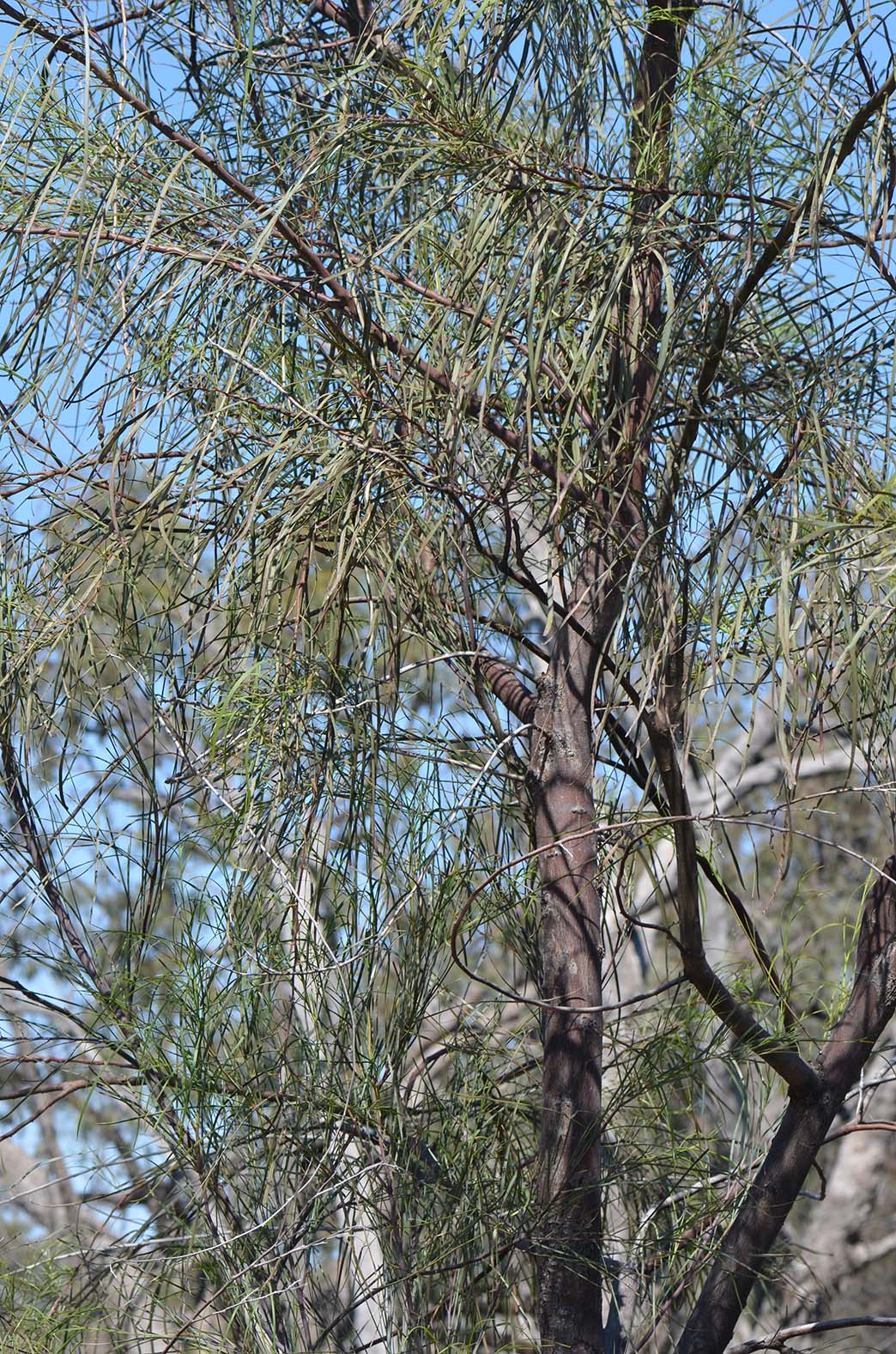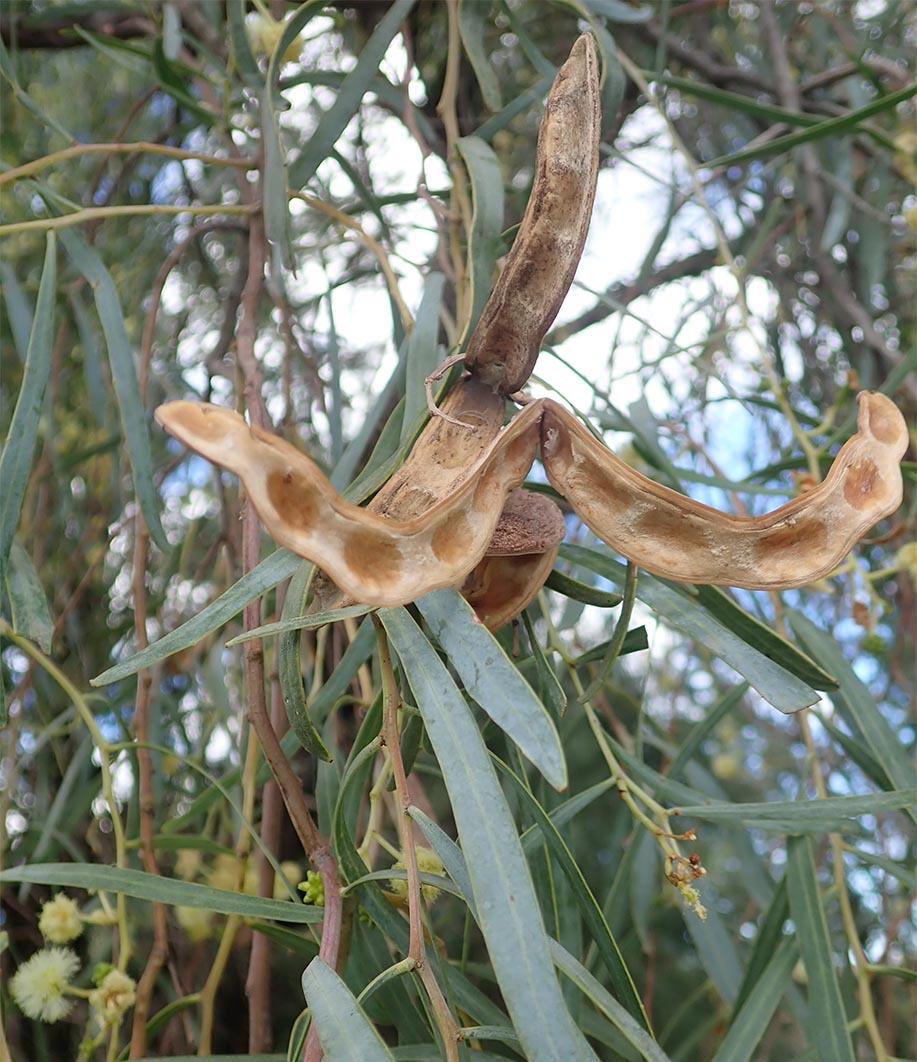Fruits/Seeds
Seed pods are straight or slightly curved, 3 - 12 cm long. Seeds are bright red or orange.
Field Guide
Improve your identification skills. Download your Willow Wattle field guide here!
Erect shrub or tree, 3 - 10 m in height, but can grow up to 20 m.
Phyllodes (flattened leaf stems) are narrow (5 - 12 mm wide) and 5 - 17 cm long. They have a prominent central vein and a curved pointed tip.
Pale yellow or white, and clustered in groups of 15 - 30 inflorescences. Flowers form globular balls.
Seed pods are straight or slightly curved, 3 - 12 cm long. Seeds are bright red or orange.
Improve your identification skills. Download your Willow Wattle field guide here!

First fully open single flower
Full flowering (record all days)
End of flowering (when 95% of the flowers have faded)
No flowering
Fruits/seeds (record all days)


Small Cooba (A. ligulata) has deep golden flowers and narrower phyllodes. Willow Wattle is distinguished most readily by its pendulous, thicker (coarsely wrinkled when dry) phyllodes with a non-hardened mucro (apical point).